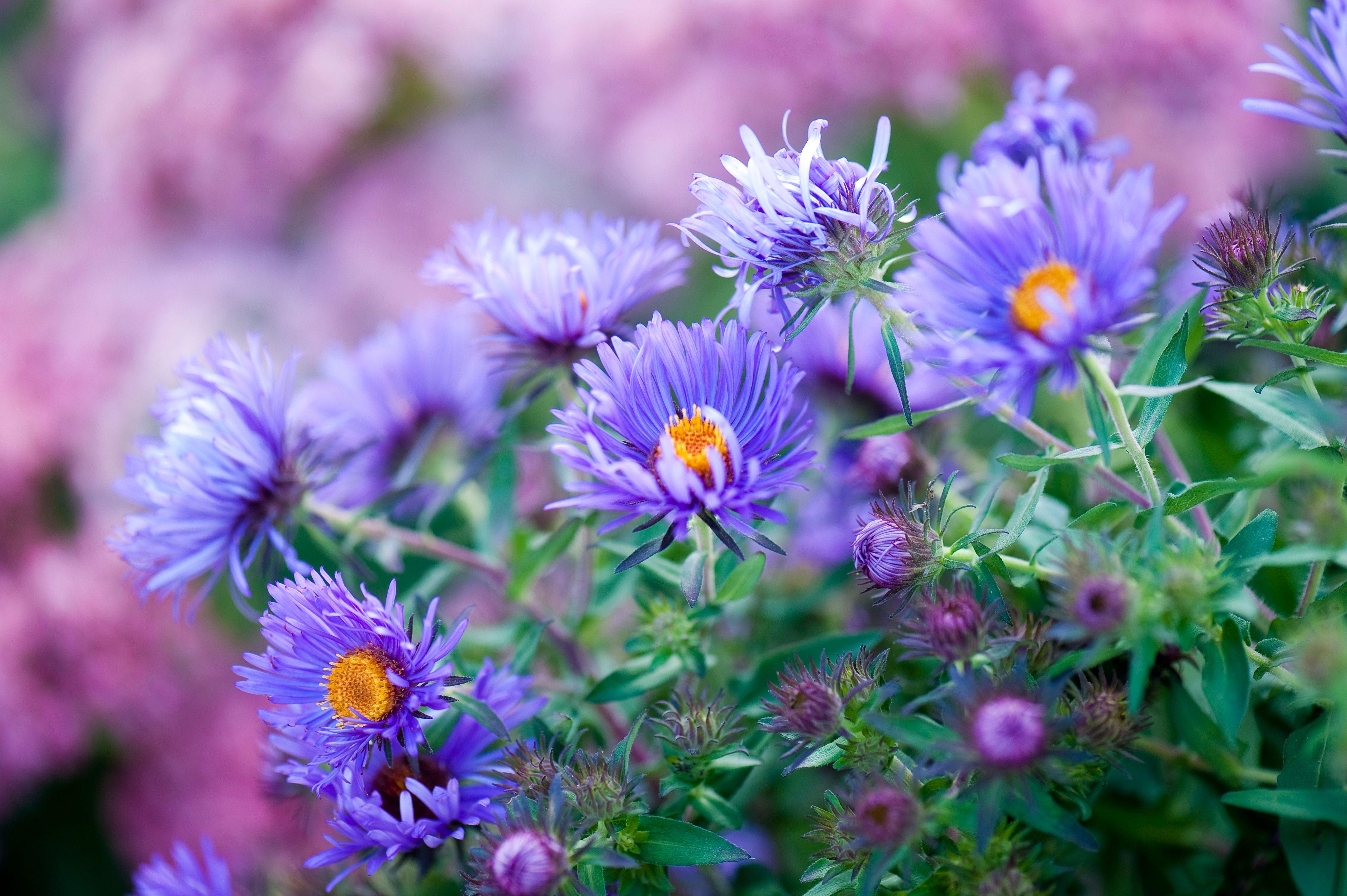8 Native Plants That Pack a Colorful Punch in Fall Gardens
These fall-blooming native plants
Published on October 14, 2025
Robert Cardillo
Autumn brings colorful foliage, but it's also when several beautiful native plants start blooming. The following perennials (and one shrub) bloom late in the season and often keep going until frost. Plant them throughout your landscape to extend the floral show, as well as provide food for many pollinators that are still out foraging until winter begins.
New England Aster
New England aster (Symphyotrichum novae-angliae) bears tons of pink, blue, purple, or white flowers that are gorgeous in a vase or in the garden. Butterflies and many other pollinators flock to these flowers.
Growing Conditions: Full sun and well-drained soil
Size: To 6 feet tall
Zones: 4-8
Goldenrod
Fall wouldn't be nearly as cheery without the yellow flowers of goldenrod (Solidago rugosa) brightening up the landscape. And despite the common misconception, goldenrod is not a source of seasonal allergies (ragweed, which blooms at the same time, is the real culprit).
Growing Conditions: Full sun and well-drained soil
Size: To 4 feet tall
Zones: 4-9
Perennial Sunflower
While most gardeners are familiar with the big-blooming annual sunflowers, perennial species are every bit as beautiful. Helianthus maximiliani 'Lemon Queen', for example, produces gorgeous creamy-yellow blooms in late summer and early fall.
Growing Conditions: Full sun and well-drained soil
Size: To 8 feet tall
Zones: 4-9
Helenium
Part of a big group of native plants in the daisy family, helenium (Helenium autumnale) offers cheery yellow, orange, or red blooms at the end of the season. And despite its common name of sneezeweed, it won't aggravate your allergies. It is so named because the flowers were made into snuff in the past, used to induce sneezing to clear out congestion.
Growing Conditions: Full sun and well-drained soil
Size: To 5 feet tall
Zones: 3-8
Turtlehead
A fun plant with a fun name, turtlehead (Chelone lyonii) earned its moniker because of the shape of its purplish-pink blooms. Clusters of these unique flowers appear around August and keep going until freezing weather sets in. This perennial likes damp soil, so it makes a good choice near water gardens or in bog gardens.
Growing Conditions: Part shade and consistently moist soil
Size: To 3 feet tall
Zones: 4-9
Mexican Bush Sage
Dozens of plants in the sage family are native to North America, and Mexican bush sage (Salvia leucantha) is one of the showier ones you can grow. It has downy white stems, gray-green willowy leaves, and spikes of pinkish purple flowers that attract hummingbirds. It's perennial in the warmer regions of the U.S. but can be grown as an annual in colder areas where it isn't hardy.
Growing Conditions: Full sun and well-drained soil
Size: To 4 feet tall
Zones: 8-10
Anise Hyssop
This tough, drought-tolerant perennial looks beautiful for months in summer and fall. That's when anise hyssop (Agastache foeniculum) is covered with spikes of lavender-blue, licorice-scented flowers that pollinators love. It's also known as hummingbird mint because this mint family relative draws plenty of these winged visitors.
Growing Conditions: Full sun and well-drained soil
Size: To 5 feet tall
Zones: 4-9
Witch Hazel
Common witch hazel (Hamamelis virginiana) contributes color late in the season with both its spidery yellow, fragrant flowers and golden-yellow fall foliage. It's especially great for brightening up a shady garden when most other plants are winding down for winter.
Growing Conditions: Full sun to part shade and moist soil
Size: To 12 feet tall and wide
Zones: 3-8



